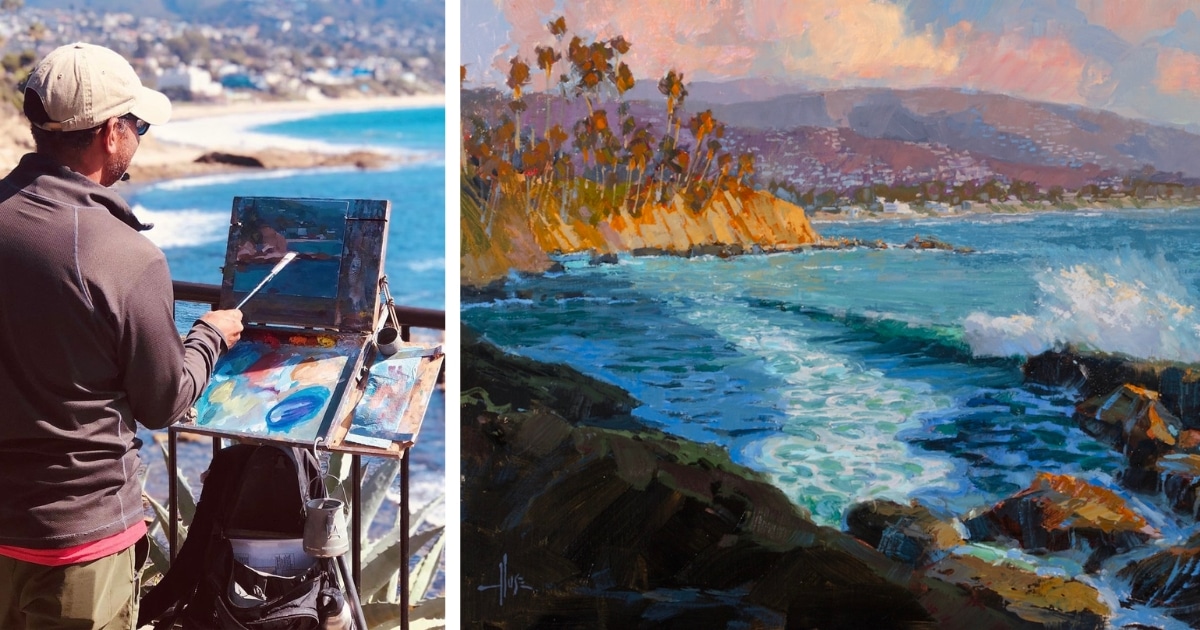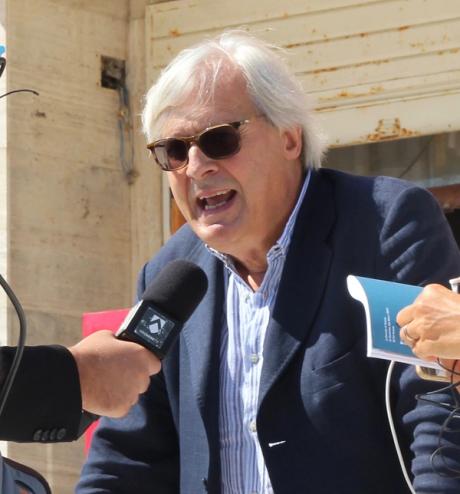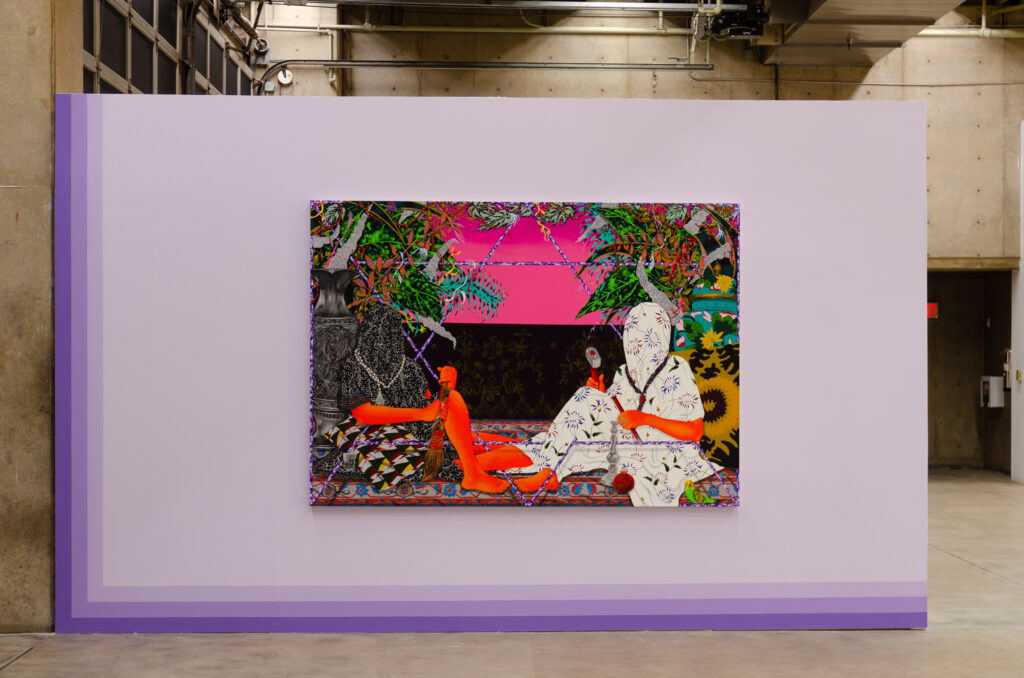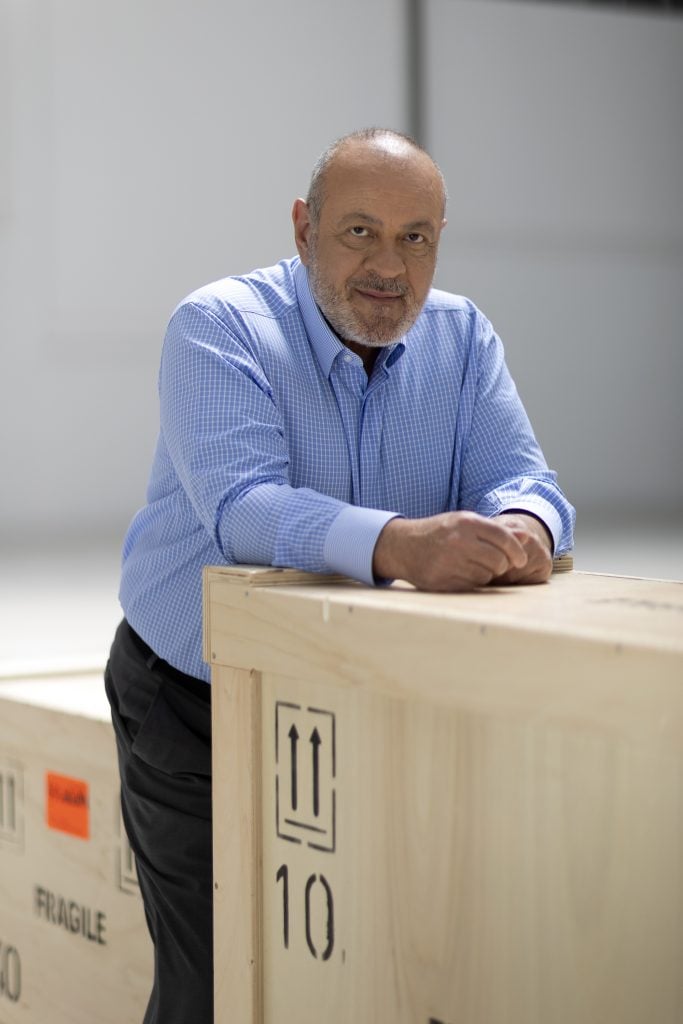Retiro
2019 - Film & Video (Film & Video)
39 minutes
Natalia Lassalle-Morillo
In her film Retiro (2019), Natalia Lassalle-Morillo considers how women pass down memories to their kin as they age. A film within a film, the three-channel portrait combines the scripted film she and her mother made together, behind-the-scenes shots of that film’s production, and interviews with her mother on gendered familial expectations and aging in Puerto Rico. Lassalle-Morillo’s meta approach to story-telling unpacks her relationship to her mother, demonstrating how maternal trauma, history, and myth are made and inherited through disjointed narratives. As a result, the film “reorganizes” ancestral trauma, giving the artist freedom to reject or move on from her inheritance, if she chooses to. The artist’s mother, Gloria—an actor, director, and screenwriter on the project—worries that history will repeat itself, as her stories, skills, and physical likeness endure through her daughter. She recounts finding refuge in her parents’ home after divorcing a man her parents never approved of, which coincided with the United States’s mid-20th-century industrialization of Puerto Rico, which changed the landscape and trajectories of many Puerto Ricans. Gloria also attempts to revive a garden that she has lost: not because it has disappeared, but in that it has become unrecognizable while within her grasp. When children are no longer recognizable from the tiny people they once were, are they gone forever? Retiro suggests that perhaps repetition can free children from their lineage, creating new beginnings, new myths, and new histories.
Natalia Lassalle-Morillo’s films explore familial, neighborly, and citizen relationships in the context of Puerto Rico’s fraught history with the United States and the resulting imperialist oppression that has altered generations of families’ material and spiritual trajectories. Born in Puerto Rico, the artist began realigning her relationship to the island after returning from the USA, delving into the multiplicity of conflicting histories she inherited as a multi-generational Puerto Rican. This sense of home-lessness—not a lack of housing but the feeling of having one’s home made unrecognizable as a product of colonization—manifests in Lassalle-Morillo’s works through multiplicity: many screens, many stories, and many iterations of a single idea that eventually unfold in its natural conclusion. The artist understands filmmaking not as truth telling, but as exploring the medium’s relationship to theater, where every person plays a part in making a story. By bringing the practice of theater into the camera, Lassalle-Morillo presents a filmmaking methodology that creates its own decolonial rhythms, disrupting Western linear notions of time.
Colors:
Related works sharing similar palette

© » ARTS EQUATOR
WINDOW by ATTEMPTS: A click away | ArtsEquator Skip to content What is this show? Rei Poh (Rei): During the Circuit Breaker when we had a sudden lockdown, we decided to start online game nights where we could just play games, and actually give ourselves a reason to check in with one another, make sure everybody is okay...

© » PRISHTINA INSIGHT
2024 Budget Prioritizes Defense at the Expense of Economic Development - Prishtina Insight Home Kallxo Jeta në Kosovë Drejtësia në Kosovë Gazeta JNK Log In Subscribe News Features Opinion Guide Big Deal Archive Follow @prishtinsight Design: Prishtina Insight 2024 Budget Prioritizes Defense at the Expense of Economic Development The Assembly of Kosovo has provisionally approved the Draft Law for the 2024 budget, just days after the Government of Kosovo endorsed it with a value exceeding 3 billion euros...

© » KADIST
Gregory Halpern
2016Gregory Halpern spent five years shooting ZZYZX , and another year editing the results, from an estimated thousand rolls of film, about half of which were shot in the final year after his Guggenheim Fellowship enabled him to live in California...

© » FAD MAGAZINE
DaDa Return With Their Annual Social Justice Lecture by Artist Ashokkumar D Mistry - FAD Magazine Skip to content By Mark Westall • 27 November 2023 Share — Liverpool-based arts organisation DaDa return in December with their annual Edward Rushton Social Justice Lecture which takes place at Museum of Liverpool on Sunday, 3rd December from 1-3pm, held on United Nations International Day for People with Disabilities and named after the local poet, activist, abolitionist, and disabled man, Edward Rushton ...

© » KADIST
Jeamin Cha
2018In On Guard by Jeamin Cha, a security guard receives safety training, juxtaposed against his patrol of an empty building as he tries to give care instructions for his ailing mother over the phone...

© » KADIST
Gan Chin Lee
2019In Studies of Chinese New Villages II Gan Chin Lee’s realism appears in the format of a fieldwork notebook; capturing present-day surroundings while unpacking their historical memory...

© » ARTNEWS
Gwyneth Paltrow Owns a Fake Ruth Asawa, Gallery Confirms – ARTnews.com Skip to main content By Shanti Escalante-De Mattei Plus Icon Shanti Escalante-De Mattei View All February 3, 2022 11:41am Actress Gwyneth Paltrow zz/John Nacion/STAR MAX/IPx On Wednesday, an Architectural Digest story featuring a look inside actress Gwyneth Paltrow’s home went viral on social media because it included one unexpected object: what appeared to be a sculpture Ruth Asawa hanging not far from an Ed Ruscha painting...

© » KADIST
Runo Lagomarsino
2020Yo también soy humo (I am also smoke) is a 16mm film that has been digitized to video...

© » MODERN MET ART
Winners From the 25th Laguna Beach Plein Air Painting Invitational Home / Art / Painting 25th Laguna Beach Plein Air Painting Invitational Celebrates Town’s Art Colony Heritage By Margherita Cole on November 30, 2023 Michael Obermeyer, “Laguna Light,” 2023 Best in Show (Photo: Tom Lamb) Just as the Impressionist painters took their canvases outside to create art in nature, many painters today follow this tradition of working outdoors...

© » KADIST
Diamond Stingily
2017Dad is Byron is an audio work produced in collaboration between Diamond Stingily and her father, the house musician Byron Stingily...

© » ARTSY
10 Artists to Discover in Foundations Winter 2024 | Artsy Skip to Main Content Art 10 Artists to Discover in Foundations Winter 2024 Artsy Editorial Jan 23, 2024 2:00PM Foundations is Artsy’s seasonal online fair spotlighting fresh works from galleries known for spotting and nurturing rising talent...

© » THEARTNEWSPER
Italy’s embattled junior culture minister resigns amid scandals Art market Museums & heritage Exhibitions Books Podcasts Columns Technology Adventures with Van Gogh Search Search Appointments & departures news Italy’s embattled junior culture minister resigns amid scandals The critic, curator and commentator Vittorio Sgarbi was being pressured to resign amid multiple investigations into his conduct James Imam 2 February 2024 Share Vittorio Sgarbi speaks to reporters in Venice in 2020 Photo by Pietro Luca Cassarino, via Flickr Vittorio Sgarbi, the controversial Italian art critic and polemicist who is being investigated for art crimes, has resigned as a junior culture minister with immediate effect, prompting a flurry of celebratory messages from his political foes...








